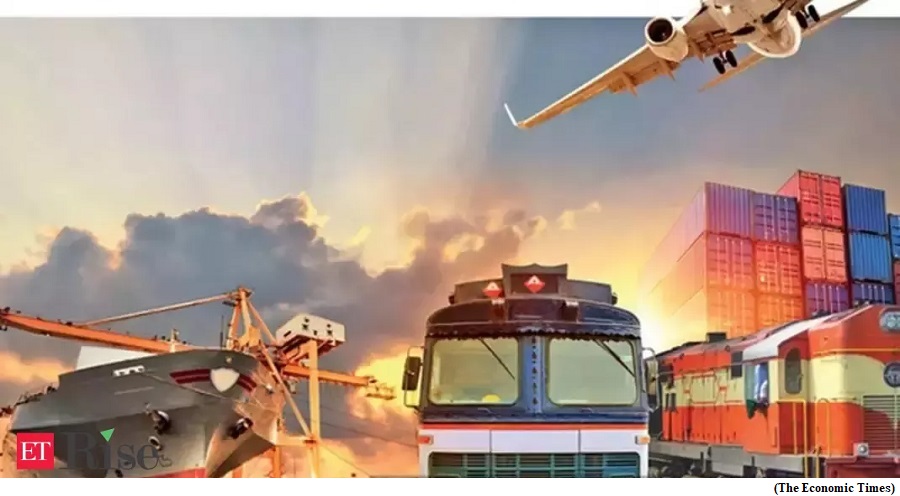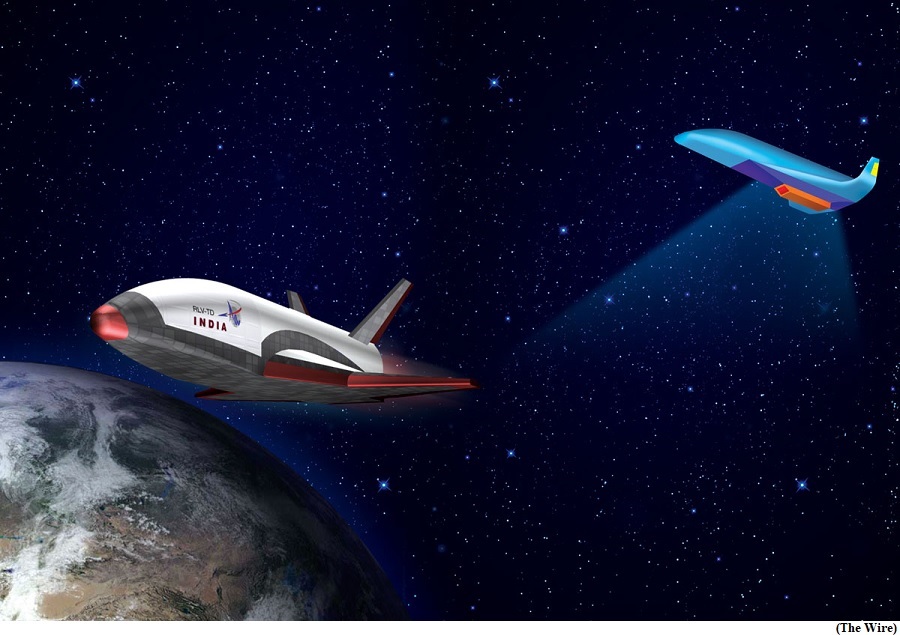Shri Sarbananda Sonowal Inaugurates National Logistics Portal-Marine to reduce the logistics cost (GS Paper 3, Infrastructure)

Why in news?
- Recently, the Union Minister for Ports, Shipping and Waterways inaugurated the National Logistics Portal (marine) in New Delhi.
- The implementation of NLP had been initiated in July 2021 with the development of NLP Marine as a first phase.
What is NLP?
- The National Logistic Portal (marine) (NLP) is a project of national importance, as envisaged by the Ministry of Ports Shipping Waterways and the Ministry of Commerce & Industry.
- It is a one-stop platform aimed at connecting all the stakeholders of the logistics community using IT, to improve efficiency and transparency by reducing costs and time delays and achieving easier, faster, and more competitive offerings of services, to promote the growth of the logistics sector and thereby improve trade.
- NLP will be a single window for all trade processes of the logistics sector spread across the country covering all modes of transport in the waterways, roadways, and airways along with an E-marketplace to provide a seamless end-to-end logistic service coverage.
Salient features:
- It is an “open platform” that allows the coexistence of multiple service providers to provide EXIM-related services independently or by combining different connectivity options.
- It has the capability to integrate with various Port Operating Systems/ Terminal Operating Systems, ICEGATE, Other regulatory agencies, and stakeholder(s) systems in the ecosystem.
- It aims to reduce regulatory complexities and enhance the ease of doing business by moving towards user-friendly paperless trade.
- This will be accomplished by utilizing the prowess of IT infrastructure to develop a single window, centralizing all necessary documentation, compliance certifications, and formal procedures necessary for the EXIM trade.
Integrated Platform for Exim Stakeholders:
Distinct verticals:
- The activities of NLP Marine are categorized into four distinct verticals viz. Carrier, Cargo, Banking and Finance and Regulatory Bodies and Participating Government Agencies (PGAs).
- This will enrich the user experience through end-to-end tracking of the shipment with notifications at each stage, seamless exchange of documents, and the ability to securely transact with transparency and speed.
Latch On feature:
- The NLP Marine experience is enhanced further with the Latch On feature, which facilitates the trade in providing the required features that are not directly embedded into NLP Marine, by linking through systems developed by other agencies seamlessly without duplication of efforts.
- It is envisaged that many standalone applications, developed by multiple vendors, users, and other stakeholders will integrate with NLP Marine through appropriate curation.
- It also enables digital transactions for payments required for the clearance processes such as Port charges, CFS charges, shipping line charges, transportation charges, etc.
Way Forward:
- The Prime Minister on 15th August 2021 announced the PM Gati Shakti National Master Plan to provide systematic, multi modal connectivity to various economic zones for seamless movement of people, goods & services resulting in efficient conduct of logistics and economic activities.
- To fulfil this mission Ministry of Ports, Shipping and Waterways has developed the NLP (marine) is an “open platform” that allows the coexistence of multiple service providers to provide EXIM-related services independently or by combining different connectivity options.
Origin of Earth’s volatile chemicals liked to meteorites: Research
(GS Paper 3, Science and Tech)
Why in news?
- By analysing meteorites, researchers from the Imperial College of London have uncovered the likely far-flung origin of Earth’s volatile chemicals, some of which form the building blocks of life.

Details:
- They found that around half the Earth’s inventory of the volatile element zinc came from asteroids originating in the outer Solar System, the part beyond the asteroid belt that includes the planets Jupiter, Saturn, and Uranus.
- This material is also expected to have supplied other important volatiles such as water.
Volatiles:
- Volatiles are elements or compounds that change from solid or liquid state into vapour at relatively low temperatures.
- They include the six most common elements found in living organisms, as well as water. As such, the addition of this material will have been important for the emergence of life on Earth.
Background:
- Previous research suggested that the Earth formed almost exclusively from inner Solar System material, which researchers inferred was the predominant source of Earth’s volatile chemicals.
- In contrast, the new findings suggest the outer Solar System played a bigger role than previously thought.
How the study was conducted?
- To carry out the study, the researchers examined 18 meteorites of varying origins – eleven from the inner Solar System, known as non-carbonaceous meteorites, and seven from the outer Solar System, known as carbonaceous meteorites.
- For each meteorite they measured the relative abundances of the five different forms or isotopes of zinc. They then compared each isotopic fingerprint with Earth samples to estimate how much each of these materials contributed to the Earth’s zinc inventory.
- The results suggest that while the Earth only incorporated about ten per cent of its mass from carbonaceous bodies, this material supplied about half of Earth’s zinc.
- The material with a high concentration of zinc and other volatile constituents is also likely to be relatively abundant in water, giving clues about the origin of Earth’s water.
Contribution:
- The findings reveal important clues about how Earth came to harbour the special conditions needed to sustain life.
ISRO to test landing of its Reusable Launch Vehicle
(GS Paper 3, Science and Tech)
Why in news?
- The Indian Space Research Organisation (ISRO) is set to conduct the maiden landing demonstration of the Reusable Launch Vehicle (RLV), which is in its technology demonstration phase.
- The spacecraft resembles NASA's space shuttles that acted as the US space agency's biggest transporter into Low Earth Orbit (LEO).
What is ISRO's RLV?
- RLV is ISRO's attempt at developing essential technologies for a fully reusable launch vehicle to enable low-cost access to space.
- ISRO has established itself as a cost-effective launch service provider in the billion-dollar satellite launch market and the new system will further strengthen its position.
Configuration:
- The RLV’s configuration is the same as that of an aircraft and combines the complexity of both launch vehicles and aircraft.
- The winged RLV-TD has been configured to act as a flying test bed to evaluate various technologies, namely, hypersonic flight, autonomous landing, and powered cruise flight.
- The system consists of a fuselage (body), a nose cap, double delta wings, and twin vertical tails along with symmetrically placed active control surfaces called Elevons and Rudder.
- A conventional solid booster (HS9) designed for a low burn rate pushes the system to a speed of Mach 5 (five times the speed of sound.)
Why is ISRO building Reusable Launch Vehicle?
- The key objective behind developing the reusable system is to stand firm in the launch market, which today is dominated by SpaceX, thanks to its reusable Falcon-9 rockets.
- The Elon Musk-led company conducted 61 successful launches on the back of its reusable system in 2022 and plans to boost those numbers to 100 in 2023. ISRO is targeting this market and a reusable launch vehicle will take it far.
- The main objective behind the system is to develop a hypersonic aero thermodynamic characterization of the wing body, evaluate autonomous navigation, guidance and control schemes, integrated flight management, and thermal protection system evaluation.
- ISRO successfully conducted a flight test of the RLV-RD in 2016 from Sriharikota, which validated the critical technologies such as autonomous navigation, guidance & control, reusable thermal protection system, and re-entry mission management.
What happens during landing demonstration?
- As part of the landing demonstration, the reusable launch vehicle will be lifted by the Indian Air Force's helicopter to a designated altitude and then dropped.
- Following this, the system will take over and ISRO hopes that the fly-by-wire system will ensure a safe and intact landing just like an aircraft on a runway.
- Initially, ISRO had planned the lifting to be conducted by a Mi-17 chopper. However, with IAF getting Chinhooks, that plan is likely to change. The date for the landing demonstration will be released once the lifting trial is completed with the IAF's heavy-lift helicopter.





